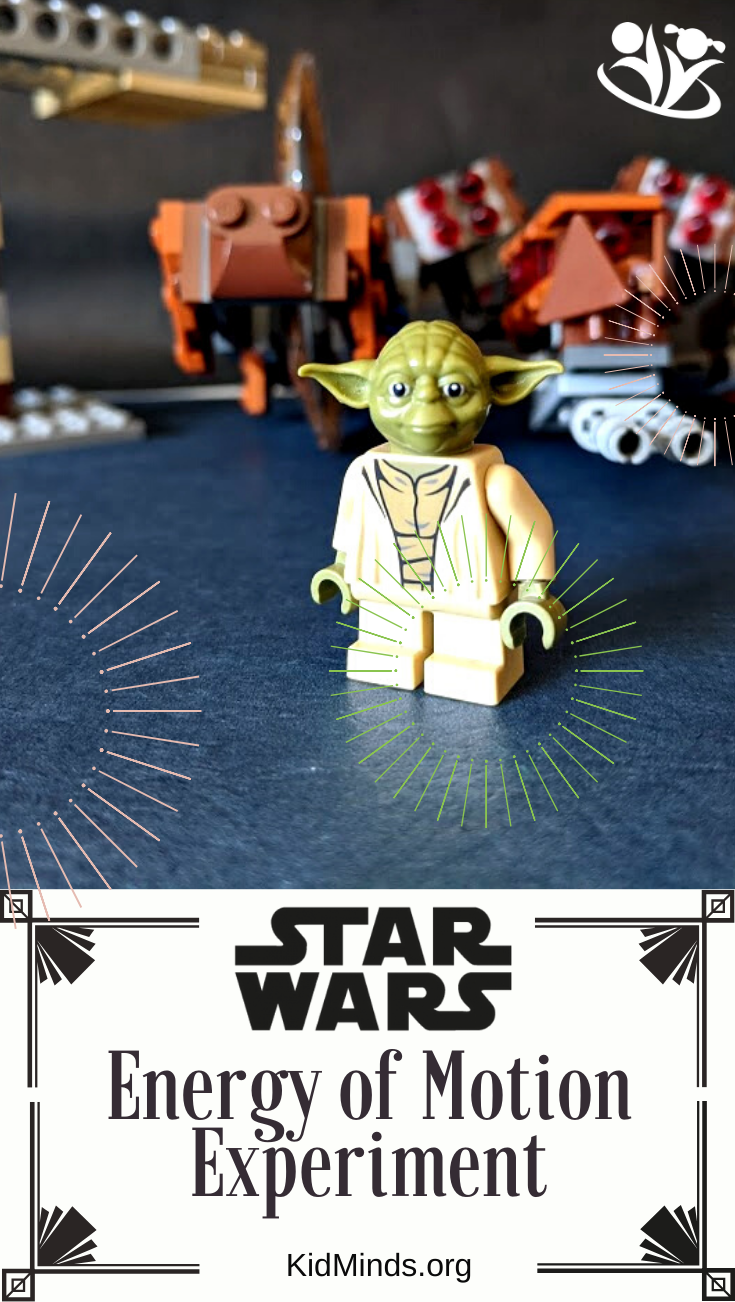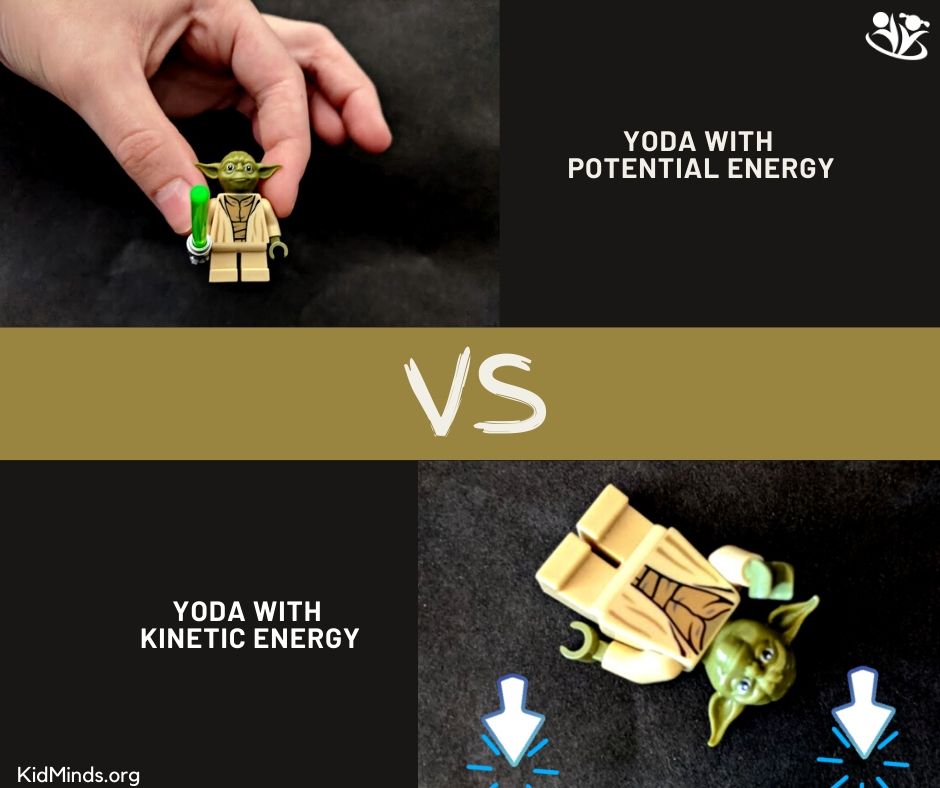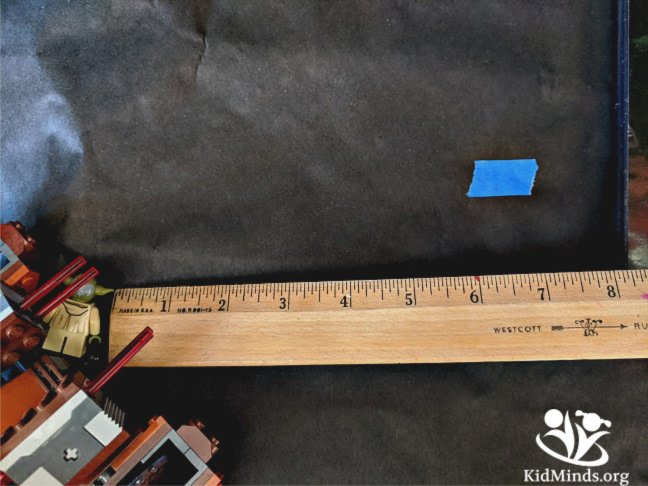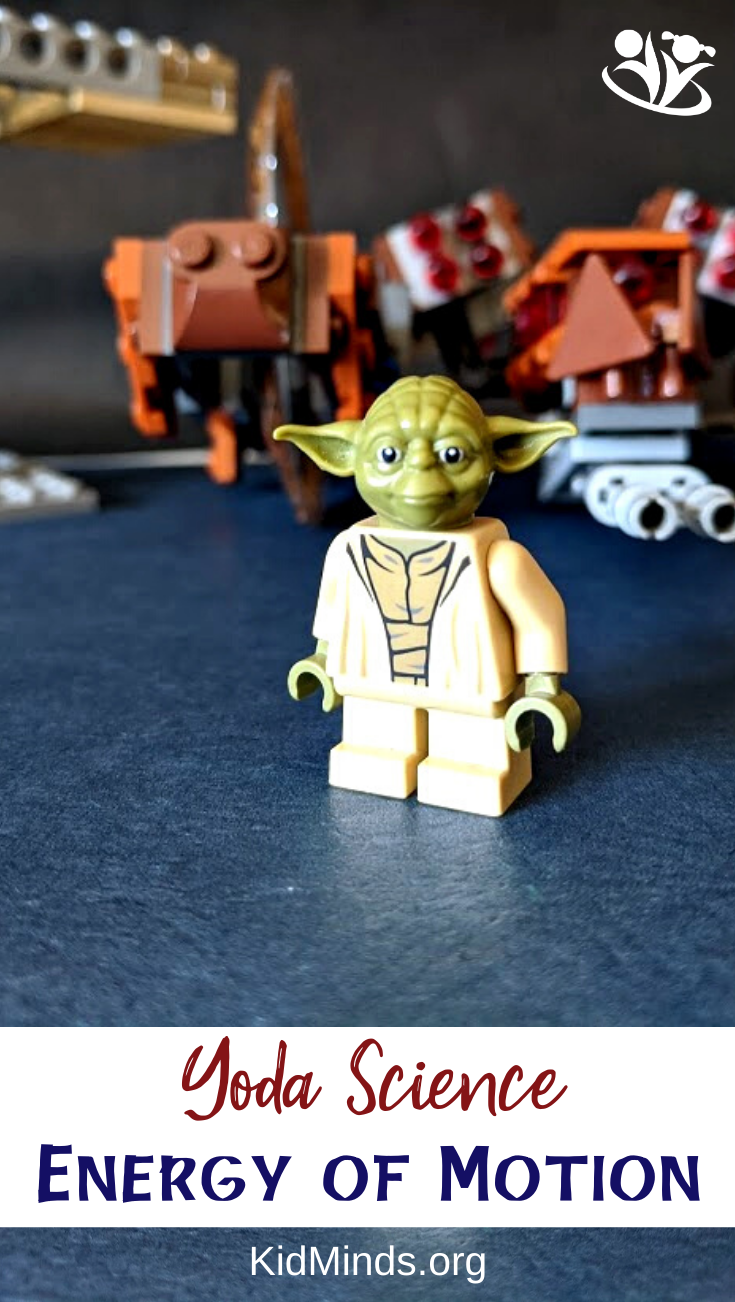Inside: Delightful Star Wars Science experiment. Introduce kids to the concepts of potential and kinetic energy with the help of Yoda, rump, and a Star Wars LEGO wheel droid. Free printables included.
Do your kids, like mine, obsess about everything Star Wars-related? Then, there’s no better way to teach them important science concepts than by merging science and Star Wars together.
From Defying Gravity and Practicing Doubles and Near Doubles to Improving Ruler Proficiency and Math Thinking, Star Wars can help kids develop STEAM skills (science, technology, engineering, art, and math). And let’s not forget about the A in STEAM! Kids can test their Jedi skills with Star Wars color-by-number.
Energy
Energy is an abstract idea that can be hard to explain to kids. Of course, we use the word “energy” a lot in everyday life, especially in the context of our ability to do or not to do something. I can’t do math problems right now – I don’t have any energy. I don’t want to sit still – I have too much energy!
We also use the word energy when we refer to the resources that have the power to provide light or electricity, move objects, or produce heat—electrical energy, heat energy, sustainable energy, etc.
The scientific use of the word “energy” comes via late Latin from Greek energeia, from en- ‘in, within’ + ergon ‘work.’ It means the capacity to perform an action, be it an observable motion or something unobservable to the naked eye, like the interaction of molecules. In short, as my 11-year-old put it, “energy makes things happen.”

Disclaimer: This post contains Amazon affiliate links. Please, refer to my full disclosure policy for details.
Forms of Energy
There are many different forms of energy (i.e., light energy, thermal energy, nuclear energy), but they all fall into two primary categories: potential and kinetic.
Potential and kinetic energy are the two basic forms of energy. Potential energy is stored energy. We use that term when something has the capacity to develop into energy in the future but isn’t doing so right now, i.e. a sleeping child or a stretched elastic band. Kinetic energy is the energy of motion, i.e. a running child or the moving elastic band when you release the tension.
Some more examples of potential (stored) energy:
- a raised hammer has gravitational potential energy (if you let go, it will drop),
- explosives have chemical potential energy,
- a stretched rubber band has elastic potential energy due to its state (once you let go, it will contract)
- Yoda can potentially use his force to make things happen, i.e. lift an X-wing from a swamp.
Some more examples of kinetic energy:
- Moving car
- Walking child
- Running Water
- Rollercoaster Ride
If an object is moving, it has kinetic energy. The faster the object is moving, the more kinetic energy it has.
So, let’s grab LEGO Yoda and a wheel droid and go conduct an investigation demonstrating the relationship between speed of motion and kinetic energy.
Star Wars Science: Energy of Motion
What you need
Yoda or other Star Wars character
Items to make a ramp (books, boxes, flat toys, tape)
A Wheel Droid or other Star Wars vehicle
Record Sheet (If you are already a subscriber, you can get it at the library. If you are not, you can subscribe here.)
What to do
- First, we are going to test the idea that potential and kinetic energies are found in all objects. Hold Yoda in space. This is an example of potential energy. Let go of Yoda. This is an example of kinetic energy.

- Now use books, boxes, flat toys, or cardboard to build a ramp. You can use tape to secure both ends of your ramp in place.
- Measure the height of the ramp and write down the number.

- Place Yoda at the bottom of the ramp and mark with a pencil mark or sticker the exact position of his feet.

- Place wheel droid at the top of the ramp. What kind of energy Yoda and the wheel droid have right now? Yep, potential.

- Let the wheel droid roll down the ramp in the direction of Yoda. Measure the distance Yoda moved from his fixed location, and write it down. We got five inches. (Don’t worry, Yoda is ok).

- Raise or lower the ramp and write down the new height.

- Place Yoda in the same spot where he was with the first ramp.
- Release wheel droid from the top of the ramp again.
- Measure the distance Yoda moved this time, and write it down. What happened when you changed the height of the ramp? In our case, the distance that Yoda traveled increased from five inches to eight. Did higher ramp give the wheel droid more or less potential energy?

In short
A wheel droid on top of the ramp has potential energy. A moving wheel droid has kinetic energy. The higher the slope, the faster the speed with which the wheel droid hits Yoda. It means the faster the moving object, the bigger its kinetic energy.
Energy Transfer
Energy can come in many forms, but it cannot be created or destroyed.
What?!
Yep, even though kids have a hard time accepting this, according to the first law of thermodynamics, the universe is a closed system, and the total amount of energy is always the same. It means you can neither create nor destroy energy, but you can transfer it.
But, my kids immediately objected, how about Yoda lifting X-wing from a swamp using only his mind. He didn’t use cranes, pull with his hands, or blast it into the air with explosives. They were insistent that there was no energy transfer.
Energy comes in different forms. And transfer takes place when energy moves from one place to another, even when we can’t see the transfer. What Yoda does have is the force, and the force is his mysterious energy. So, in the end, his use of force is a form of energy transfer from Yoda’s mind to an object in front of him.

Discussion questions
What’s energy?
Where does energy come from?
Can energy be created or destroyed?
How can energy be transferred?
If you want to print this Word Search, go HERE.

If you want to print the Record Sheet to use with this experiment, go here.

If you want to print this Crossword Puzzle, go HERE.


[…] recently, when my kids were exploring Potential and Kinetic Energy, my kids and I did some awesome Energy of Motion simulations with Yoda and a LEGO Wheel Droid […]